– By Cheantay Jensen
In early February this year, not long after Maggie Stoll had closed her clothing store Burke Mercantile to customers for the night, she reopened it to allow a trail of women inside. They’d come from next door, or down the street after closing their own storefronts. As fellow business owners in East Village, they had been invited to stop by to chat about business and coordinate event planning, but mainly, it was a gathering of friends.
“It’s a lot of ladies on First Street,” said Rachelle Llanes, owner of Wildflower Beauty and Brows. “I feel that’s what makes us stand out.”
Downtown’s East Village Arts District boasts an abundance of small businesses with locally invested owners who’ve curated unique shopping and dining experiences and brought specialty goods and services to the area. But as Women’s History Month approaches, we thought it time to highlight a special community that exists among its women business owners, who have, over the years, developed a special rapport with one another that is distinctly unique to the East Village.
“I have a lot of connections with business owners all over the city, especially women-owned business owners and I’ve had so many of them tell me, who are not in our area, how lucky we are and how jealous they are that their business association doesn’t have that camaraderie,” Stoll said.
It’s a kinship that begins early, the women say, sometimes before leases are even signed. Kimberly Latham, owner of boutique Anneise, remembers when Kathleen Engel and her husband were scouting out storefronts for what would become MAKE Collectives, a clothing and lifestyle goods store that’s neighbored Anneise for over a decade.
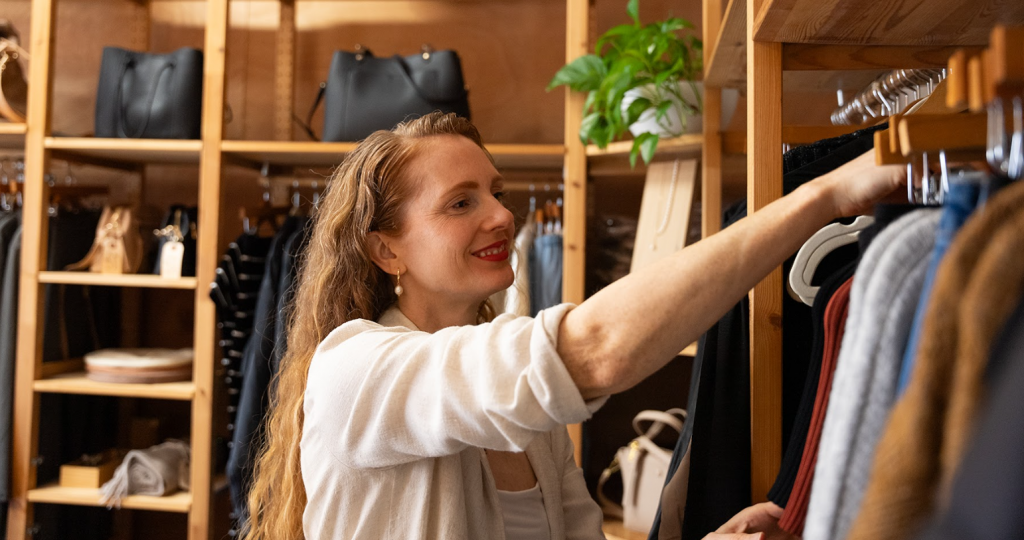
Photo by Cheantay Jensen
“I remember flagging them down like a weirdo, saying ‘yes, please come be a business on our block,’” Latham said.
Though Latham may not have realized it at the time, her welcome made an impact.
“Kimberly was such an inspiration to me. She had just opened (her store) and she was also a woman and a new mom,” Engel recalled. “That really set the tone for me and sits with me to this day, 12 years later.”
There’s a sort of red-carpet experience many of the women we interviewed for this story described from their female comrades when they moved in, with many quick to offer words of advice or invitations to join the fold.
“Whenever Crystal or Natalie (from 3 Women) would host events, they were always trying to make me part of their events,” said Llanes, owner of Wildflower Beauty and Brows. “Even if it was solely their event, they were always including me.”
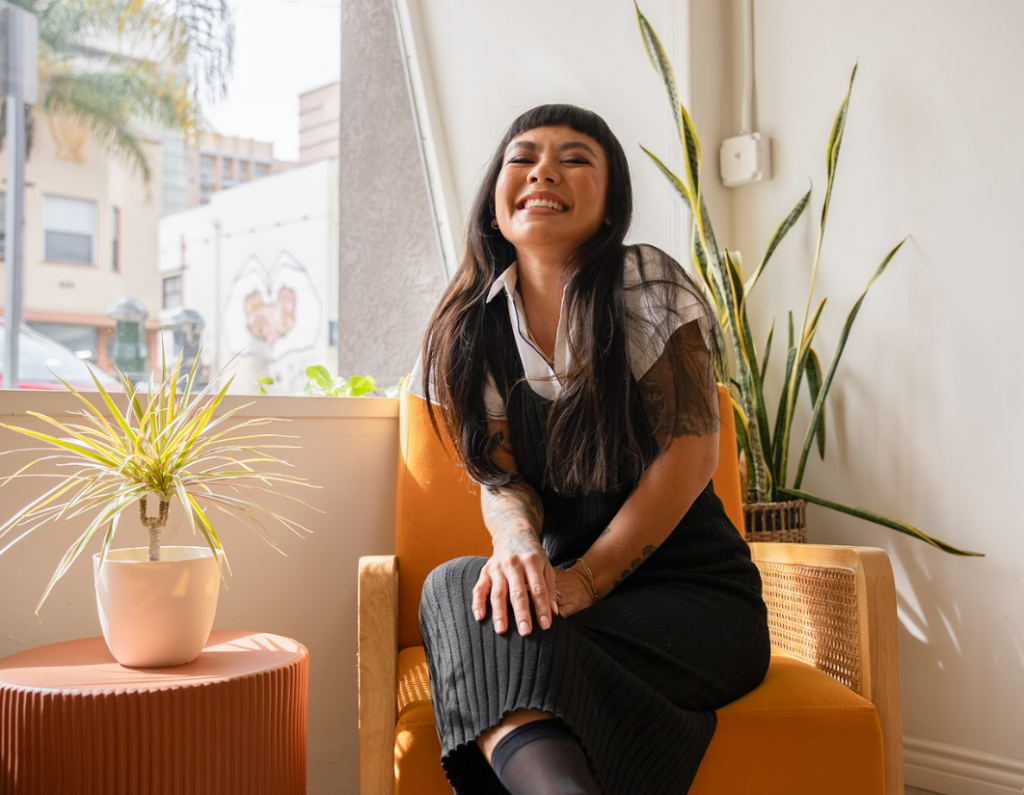
Photo by Cheantay Jensen
Ani Gabrielson, owner of The Hellbent Silversmith, a jewelry store and silversmithing workshop, recalled how touching the unsolicited help she received from her neighbors felt as she rushed to open her first storefront in 2022.
“I had so many questions and needed a lot of help,” she said. “Maggie next door at Burke Mercantile has always been a huge help. And then Julie (Darrell) from BYO always let me borrow her ladder, little things like that. I’ve always felt very supported by the other small businesses.”
As the community has grown, so too has their reputation. And, it’s attracted more women business owners to the area.
“I always loved this neighborhood. I love the art, and how quaint it is, the buildings look so beautiful and there’s just that little spark to it. It’s very different from other places in Long Beach,” Llanes said. Having shopped in the area for many years, she knew how strong the women business community was. When she finally decided to take the plunge and open her beauty studio in 2020 she knew she wanted it in the East Village.
“For me it just felt so perfect, so right being in a women-owned business community,” she said.
East Village is a neighborhood filled with men and women entrepreneurs who are eager to see the area succeed and willing to put in the work to make it happen. But, Stoll said, there is an unmistakable tenacity among her female cohorts. She was particularly struck by Crystal Early from 3 Women, a longtime vintage clothing store that had been a fixture on 1st Street for many years before it shuttered last year.
“I think my first week moving into the store, she (Early) was organizing a neighborhood meeting,” Stoll said. “She was this sort of firecracker glue between everyone in the neighborhood. She was friends with everyone. She wanted to be in communication and collaborate.”
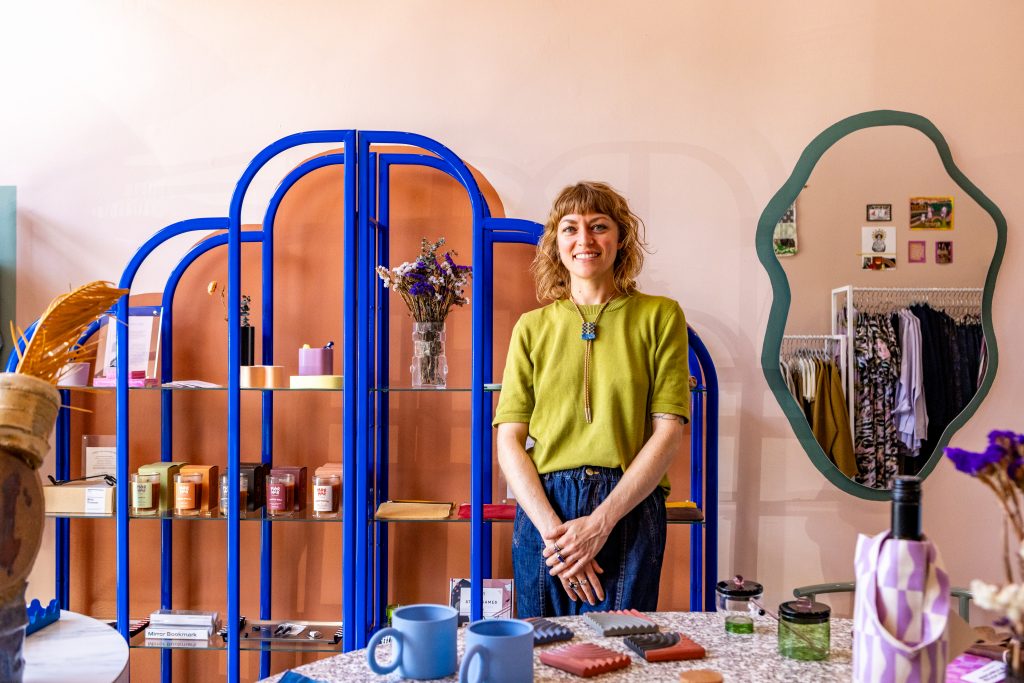
Photo by Jose Cordon
Stoll didn’t wait long after moving in, in 2018 to contribute. With monetary help from Early, the pair hired a graphic designer to create branding for the East Village Arts District and built the formal website that features a directory of all the businesses in the area. They also revived the neighborhood’s Instagram account that’s now maintained by Stoll and several other businesses in the East Village. Their efforts, she said, energized the neighborhood to help contribute too.
“It was everyone coming together to offer what they could support to marketing and the neighborhood as a whole,” Stoll said. “I think it’s led to such instinctive cross promotion amongst all of us now. We’re always shouting out each other and sharing others’ posts and products.”
It was an exciting time to be a business owner in East Village in 2018 and 2019, Engel recalls. The neighborhood’s popularity was steadily rising, foot traffic was consistent, and she says she felt like she had the bandwidth to innovate for the future.
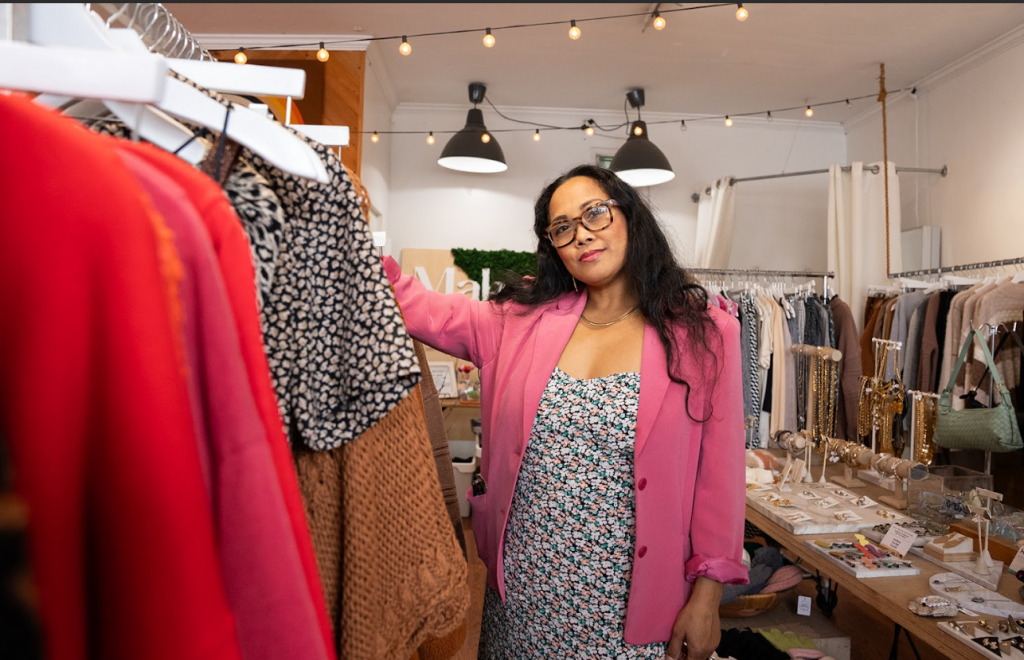
Photo by Cheantay Jensen
But when the coronavirus pandemic came crashing down, business owners at the time drastically pivoted their focus. Many took their stores online, venturing into an e-commerce model for the first time and steeled themselves on getting through the day-to-day with the hope that once the world rebalanced, that things would return to normal.
Four years into the aftermath, and recovery has been slow.
East Village isn’t alone in this either. Large retailers have experienced their own splash of setbacks in light of a stalled economy, with stores such as Rite Aid, CVS and Footlocker closing stores across California and major home goods retailers such as Z Gallerie and Tuesday Morning filing for bankruptcy.
Small businesses across California report financial insecurity in the face of inflation, a volatile economy, slower foot traffic and consumer spending habits remaining largely online with business mainly funneling into major retailers or marketplaces. According to a recent survey by the messaging service Slack, 32% of small business owners said they weren’t sure if they could make it past 2024.
“It’s worse than ever because people aren’t coming out as much,” Engel admitted. “I’m 12 years in and it’s the hardest it’s been.”
“I think we’ve all reached a challenging point financially,” Stoll added. “But I personally feel that I’m still going because of my small business community.”
Outside of Anneise, Latham displays a sign that reads “local is everything.” And indeed, it’s the community these business owners hope and are relying on to become reinvigorated in supporting their local economy.
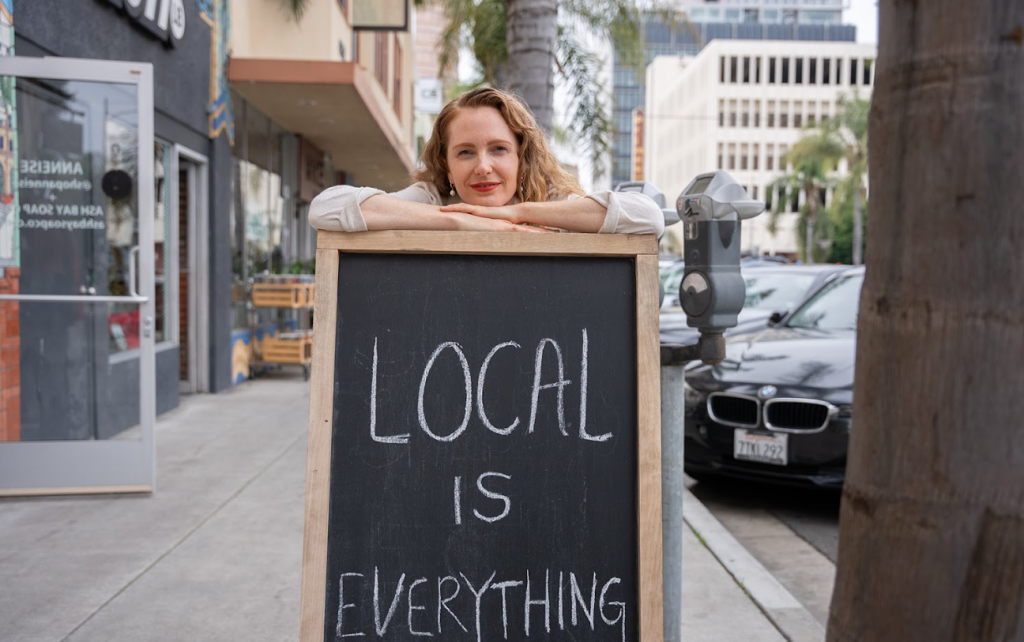
Photo by Cheantay Jensen
Allied in their shared struggles, the community has grown closer, especially among the women. They say they’re in constant communication and are now coming together again to try and bring more attention to the neighborhood.
“We want to remind people that we’re here and we exist,” Latham of Anneise, said. “One way to do that is through events.”
It’s still early in the year, but locals can expect a swell of events coming to the area again. Engel says in April she’ll be relaunching her makers workshops, where guests can learn how to make jewelry or learn how to utilize the crystals she sells in her store.
As grateful as they all are to be surrounded by doers, the emotional support they’ve all given each other is remarkable as well.
“It is so amazing to just not feel like you’re alone. And to be able to connect with other people who have the same goals as you,” Engel said. “It’s not easy to be that vulnerable. But when you’re surrounded by women, and when we feel more open and connected, we can be more vulnerable, and you don’t find that just anywhere.”

